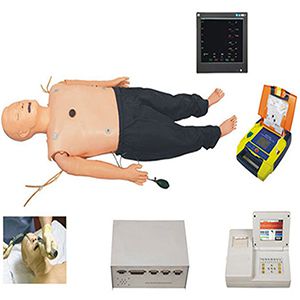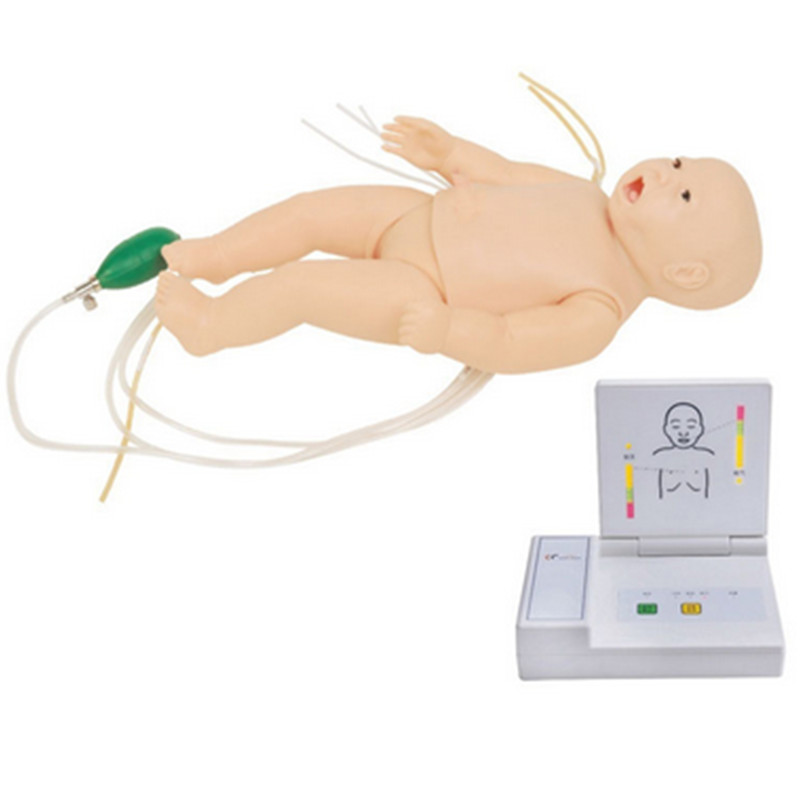
What is CPR?
Article tag: cpr model cpr operation,cpr dummies, cpr simulators

Cardiopulmonary resuscitation (abbreviation: CPR) is a first-aid measure to rescue cardiac arrest patients by artificially maintaining brain function until natural breathing and blood circulation are restored. CPR is not a single technique; it encompasses a series of assessments and actions. In addition, the steps of CPR may need to be modified according to different causes of cardiac arrest.
...
Cardiopulmonary resuscitation (abbreviation: CPR) is a first-aid measure to rescue cardiac arrest patients by artificially maintaining brain function until natural breathing and blood circulation are restored. CPR is not a single technique; it encompasses a series of assessments and actions. In addition, the steps of CPR may need to be modified according to different causes of cardiac arrest.
The International Resuscitation Federation and the American Heart Association jointly define the content of cardiopulmonary resuscitation as follows: first perform chest compressions (Compressions), then perform airway clearing (Airway), confirm that there are no foreign objects in the mouth, and then artificial respiration (Breathing) (most people do not use this Steps) to obtain an automated external defibrillator (Defibrillation) as soon as possible. That is "CABD". The general public (or those who dare not give artificial respiration) should perform chest compressions (Compressions) and obtain and use automated external defibrillation (Defibrillation) or "CD" as soon as possible .
Once a cardiac arrest occurs, if the patient does not receive timely rescue and resuscitation, irreversible damage to the brain and other important human organs and tissues will occur within 4 to 6 minutes. Therefore, cardiopulmonary resuscitation after cardiac arrest must be performed immediately at the scene. To win the most precious time for further rescue and saving the life of the patient suffering from cardiac arrest. It is recommended that basic life support (BLS) be performed within four minutes of cardiac arrest and advanced cardiac life support (ACLS) be performed within eight minutes.

Before performing CPR, first responders should assess the environment and patient and seek outside help.
1. Assessment and site safety. After confirming that the scene is safe, first responders should immediately activate the emergency response system and perform cardiopulmonary resuscitation for those who have no pulse, no response, no breathing or no normal breathing. (When a person has stopped breathing but has a pulse, first responders should provide emergency ventilation (without chest compressions). The recommended rate is 10 to 12 breaths per minute for adult patients and 12 to 20 breaths per minute for infants and children.)
2. Activate emergency medical service (EMS)
(1) If only one first responder is present, the first responder should immediately activate the EMS system (call the emergency number), obtain a defibrillator (if available), perform cardiopulmonary resuscitation on the patient, and perform defibrillation immediately if necessary.
(2) If there are multiple first responders present, one of the first responders should perform cardiopulmonary resuscitation according to the steps, and the other should activate the EMS system, get a defibrillator (if possible), and perform defibrillation immediately if necessary.
(3) When rescuing a drowning or suffocating cardiac arrest patient, first responders should first perform 5 cycles (2 minutes) of cardiopulmonary resuscitation before starting the EMS system.
For non-professional emergency personnel, pulse checking is not emphasized. Patients who are unresponsive and unable to breathe spontaneously should be treated as cardiac arrest. For medical staff, the index finger and middle finger of one hand are usually used to touch the patient's carotid artery to feel whether there is a pulse to check the pulse (the pulse contact point is in the sternocleidomastoid groove next to the thyroid cartilage). The time should generally not exceed 10 seconds. If it is still not possible to determine whether there is a pulse within 10 seconds, chest compressions should be implemented immediately. When checking the breathing of an unresponsive adult, what should be judged is normal breathing; when checking the breathing of an infant or child, what should be judged is the presence or absence of breathing, because babies and children often have symptoms that are different from adults but are normal breathing.

Key points of cardiopulmonary resuscitation:
1. The compression rate is at least 100 times per minute and no more than 120 times.
2. The compression range for adults is at least 5 cm and not more than 6 cm; for infants and children, the compression range is at least one-third of the front-to-back diameter of the chest (approximately 4 cm for infants and 5 cm for children).
3. Ensure that the chest rebounds after each compression.
4. Minimize interruptions in chest compressions.
5. Avoid hyperventilation.

Marketing Center
Hong Kong, ChinaProduction Base
Shanghai, ChinaProducts
Contact Us
 Address: Hong Kong, China
Address: Hong Kong, China
 Phone:+86 19937901373
Phone:+86 19937901373
 Email:sophia@adahealthy.com
Email:sophia@adahealthy.com
 Mobile:+86-0379-65160607
Mobile:+86-0379-65160607








